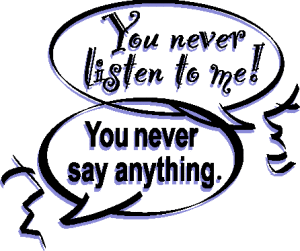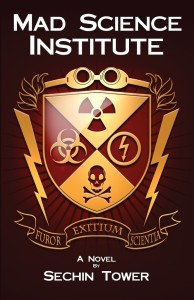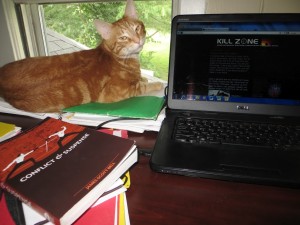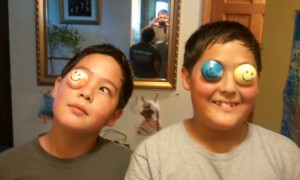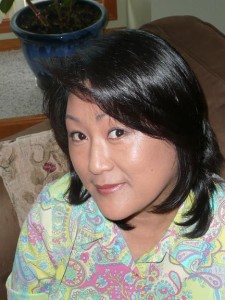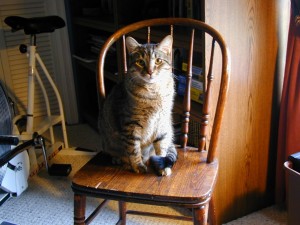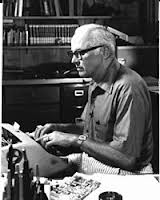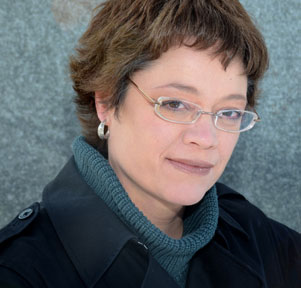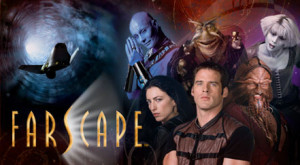I’ve always loved writing dialogue. It’s the backbone to a scene for me. When I had my day job and had to sneak off to write during my lunch hour, I first fashioned the scene with dialogue, using it as a framework for the other layers. I wrote the lines like a screenplay. I usually only had time to draft a scene or two that I would work on once I got home.
The next layer would be the body language and how the scene would move between the lines, to add the nuance of the people being together to add more context. I’d also layer in setting. And the last thing I would add was internal narrative to give color to my characters. I called this method, BUILDING AN ONION FROM THE INSIDE OUT and it’s part of my FOR WRITERS resources page – the post on START WITH A BANG, IT’S ALL ABOUT PACE. I developed a sparse style that had a beginning, middle and close to each scene that usually ended with a foreshadowing or memorable image between the characters to add an element of pace. But the backbone to all of this was DIALOGUE.
Regardless whether dialogue comes easily to you or is a challenge to write, it is an essential element to a scene and a book. Internal dialogue adds color and voice to your work. And the dialogue between the characters can make each one distinctive and add rich context to the world you are building. An excellent example of memorable world building and dialogue that adds depth is Elmore Leonard.
If you have recommendations on other authors who have stood out in your mind for memorable dialogue, I would love to hear your thoughts. But here are a few four tips to start with:
DIALOGUE TIPS
1.) Make it Short & Sweet – Long, rambling dialogue can lose the reader. It’s my belief that the human eye needs the relief of the white page, otherwise you run the risk of losing the punch and pace. If you have one character with a long diatribe, I would suggest finding ways to break it up with discussion from other characters or action to give it pace and flow.
2.) Make it Real – Listen to real chatter between two people. They may use slang, contractions, or fragmented sentences. Too much slang can date the book or alienate a certain audience, so be careful not to pepper too much into your book, but learn what makes dialogue sound real by listening to others. Certain phrases, pauses, body language interludes can add depth here. Another way to listen to dialogue is focusing on the radio, the banter between DJs for example.
3.) Be Willing to Break Grammar Rules – Sticking strictly to proper grammar and the King’s English can make dialogue sound stilted and formal. Some characters demand real rule breaking, yet you may have one that is educated and proper. Seeing the contrast from that kind of character to a street kid, for example, can make the dialogue interesting, but the name of the game is to make each voice distinctive and interesting. It’s funny that I usually write dialogue without contractions, but have to go back and add them later. Not sure why that is, but it’s one of my edit reviews, to make sure the dialogue flows and sounds real.
4.) Read it aloud – I can’t stress how important I think this is. Read your dialogue aloud. If you stumble on certain words, change them. Make them roll off the tongue. You won’t regret taking the time and it will help with finding those pesky typos too.
DIALOGUE FORMATTING
1.) Start a new line when a new character comes on the scene. I also like to drop down lines to give more white space for the reader’s eye. So try not to embed dialogue within a paragraph of narrative.
2.) Keep tags simple but clear. With too many lines strung together, the reader can lose track of who said what. But if there is only one man and one woman, there’s no need to use their first names over and over. The generic ‘he’ or ‘she’ said will suffice. And overuse of adverbs and too many repeats of body language/movements can stick out to irritate an alert reader. For example, instead of a simple ‘he said,’ an author might make the mistake of using ‘Joe chortled mockingly.’ (Oy, the overwriting and too much repetition can wear on a reader. The basic use of ‘he said’ becomes part of the background white noise and not a distraction that could pull the reader from the story.)
3.) Pepper in a name once in a while, to remind the reader who is talking. After pages of ‘he said,’ they could forget who was speaking, especially if it’s two people of the same gender. Then, using first names becomes more important. Or use a generic description of the character to break up the pattern of first names, something like ‘the detective said.’
If you have any tips on writing dialogue and what works for you, or authors who write noteworthy dialogue, please share your thoughts with your fellow TKZers.

